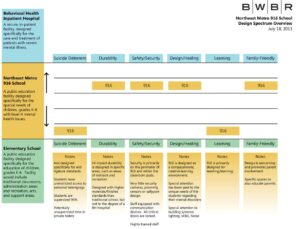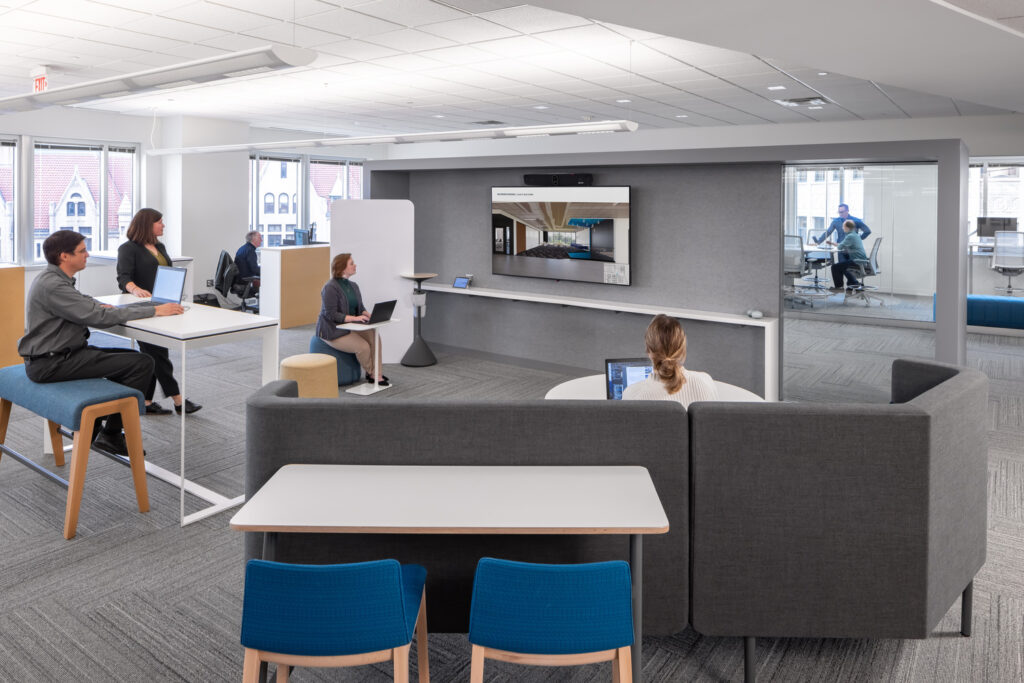They probably wouldn’t call themselves ‘Champions of Change.’ It sounds too grandiose…too self-serving. Looking back at the project, they’d more likely say they were just doing what was right for their very special kids. However, a small handful of dedicated teachers, behavioral specialists and educational administrators created transformative change in the perception, connection and teaching of young children with severe Autism and emotional-behavioral disorders, and it is change that is reverberating.
As a design team, we do projects all the time. It’s what we do and we love it. But it is a rare honor to be included as a creative partner of an emerging idea, a new concept that could only be tested through a very different process of discovery with a diverse group of passionate individuals. Even more than that, it is rare that we get to witness real leaders emerge out of the confusing noise of educational and social issues, dwindling resources, and the crushing, negative stigma of mental illness.
Seldom do we get the opportunity to learn what happened beyond the project, to study and reflect past the endless details and final design solution, to look at the other side of the project: the intertwined stories of authentic leadership, acts of personal courage, articulating a compelling vision, supportive team dynamics and the individual passions for change. It sounds like hyperbole, but, as I said, this was a very rare project, and one that we all can and should learn from.
Northeast Metro Intermediate School District 916 represents multiple school districts and has been providing very specialized educational services to schools for a long time. They have a high degree of expertise and a long history of success in teaching children with special needs. They’ve also developed very innovative programs and creatively adapted outdated physical spaces, but they wondered if they could do better.
Could they make their programs even more effective for the students? Could a different kind of learning environment be created to specifically address this unique population of students? They decided to explore their questions more deeply and create something very different. This is where we came in as a design team.
The 916 team knew that “new” is not always better. They also knew building a school based on traditional learning concepts would not be the best solution; it would not be enough.
Because teaching children with unique mental, physical, emotional and learning needs is so challenging, the opportunity to build a school that was designed specifically for them was at the same time daunting and exciting. They understood that the new school concept needed to look, feel and function quite differently. So, the design process needed to creatively connect the dots of three seemingly dissimilar environments: schools, mental health facilities, and secure environments. With that, they needed to combine the overriding themes of dedicated teaching/learning, compassionate care/healing, and human-centered safety.

This also meant that in the design process the team needed to be extremely agile in their thinking and establish a team culture of trust, engaged listening and learning, and open communication.
With such a unique challenge, a first response might be to come up with solutions to just fix what wasn’t working in the existing schools…to only react to the defects of current conditions. Key to their success, though, was their attitude of encouraging each other to come up with fresh ideas; to dream, hope, and imagine something more; to ask the “what-if” questions. This is where they became “champions of change” and where new leaders emerged out of creative struggles and embracing those too infrequent ‘ah-ha’ moments we all hope for in design.
As any coach will tell you, “champions” are not made of me’s but rather we’s. These champions came together as a team with a broad range of voices and interests. Guided and supported by their leadership, they listened hard to each other and began to develop a compelling vision for the project, which was for the kids. The new vision helped establish consensus on guiding principles, which helped focus the team and provide clarity for decision-making.
It was here that we could to see the courage of individuals who spoke out new ideas and perspectives with their minds and hearts. Even though they were all still doing their “regular jobs,” they stayed with the process with enduring stamina and a positive attitude. Their collaborative nature enabled differing ideas and priorities to merge into authentic concepts. Time and again, they set their own personal priorities and egos aside to see and hear an issue from a different point of view. This is truly rare.
Was it all fun and games? No. Like every project, there were really big challenges. However, the dynamics of this team sharing a compelling common purpose was worth the extra effort. No one person needed to own the idea or be personally recognized for their efforts. They worked through it, because it was right thing to do.
It is cliché to say that champions are forged out of hard work. In this case, it seems more than applicable. The teachers, administrators, and district staff, through their collective voice, became quiet champions of creativity and advocates for a new way and environment to teach and heal special kids. They are not unabashed, but they also aren’t seeking praise. And maybe that is what makes them great, because, in the end, true champions work to lift up others, and for the children who are benefitting from their vision and work, these champions have definitely shown the value their students have in the world.








